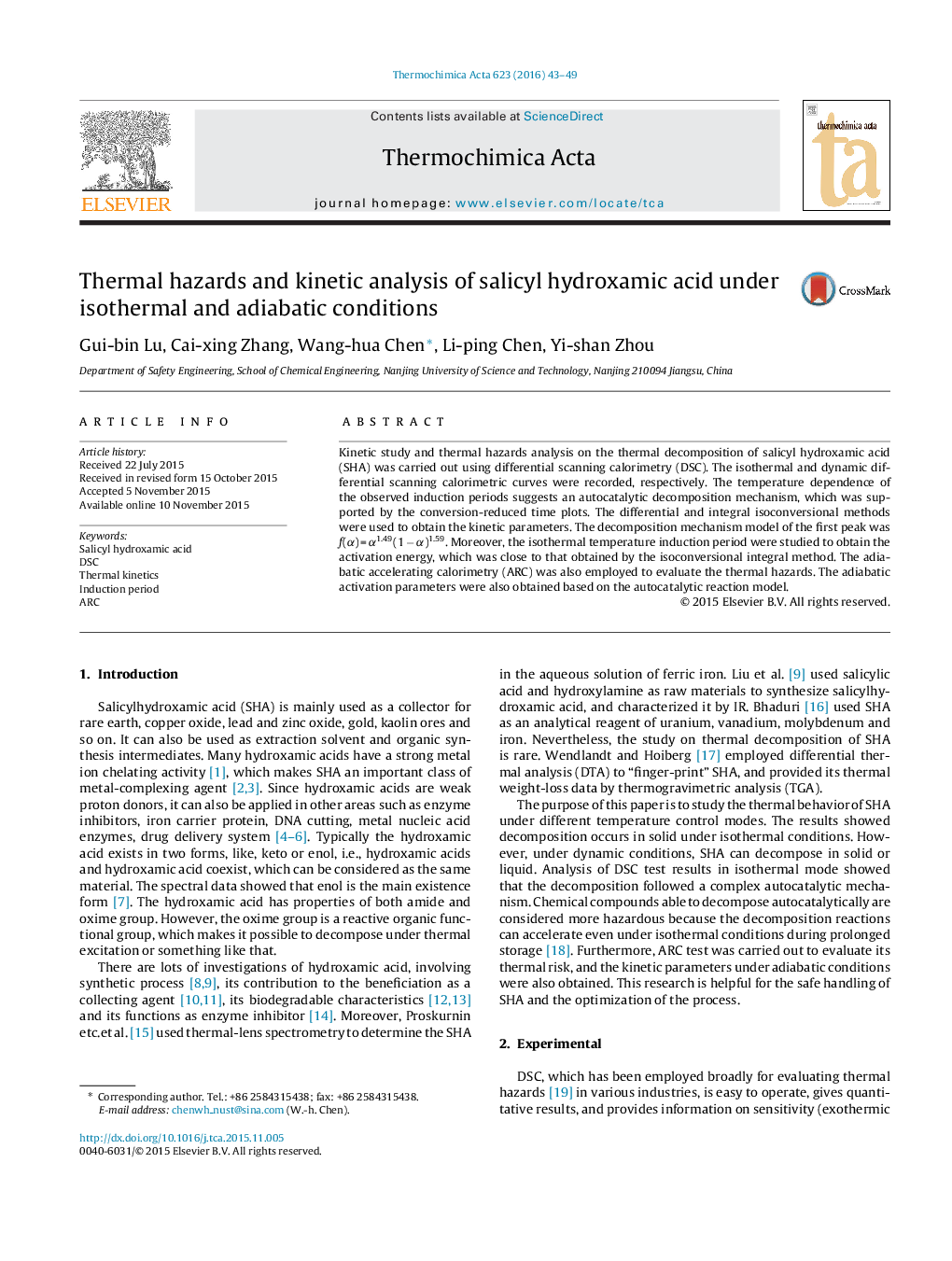| Article ID | Journal | Published Year | Pages | File Type |
|---|---|---|---|---|
| 7062223 | Thermochimica Acta | 2016 | 7 Pages |
Abstract
Kinetic study and thermal hazards analysis on the thermal decomposition of salicyl hydroxamic acid (SHA) was carried out using differential scanning calorimetry (DSC). The isothermal and dynamic differential scanning calorimetric curves were recorded, respectively. The temperature dependence of the observed induction periods suggests an autocatalytic decomposition mechanism, which was supported by the conversion-reduced time plots. The differential and integral isoconversional methods were used to obtain the kinetic parameters. The decomposition mechanism model of the first peak was f(α) = α1.49(1 â α)1.59. Moreover, the isothermal temperature induction period were studied to obtain the activation energy, which was close to that obtained by the isoconversional integral method. The adiabatic accelerating calorimetry (ARC) was also employed to evaluate the thermal hazards. The adiabatic activation parameters were also obtained based on the autocatalytic reaction model.
Related Topics
Physical Sciences and Engineering
Chemical Engineering
Fluid Flow and Transfer Processes
Authors
Gui-bin Lu, Cai-xing Zhang, Wang-hua Chen, Li-ping Chen, Yi-shan Zhou,
